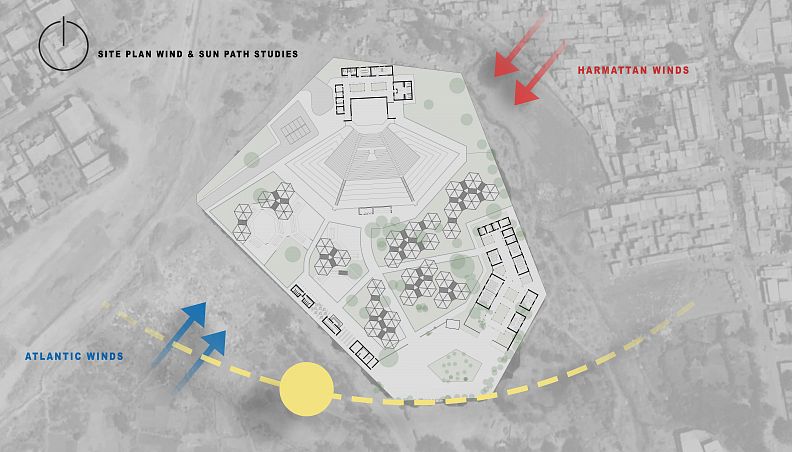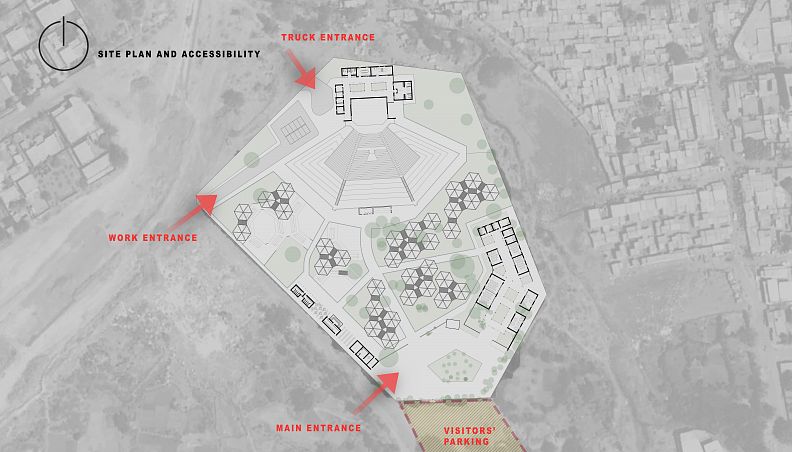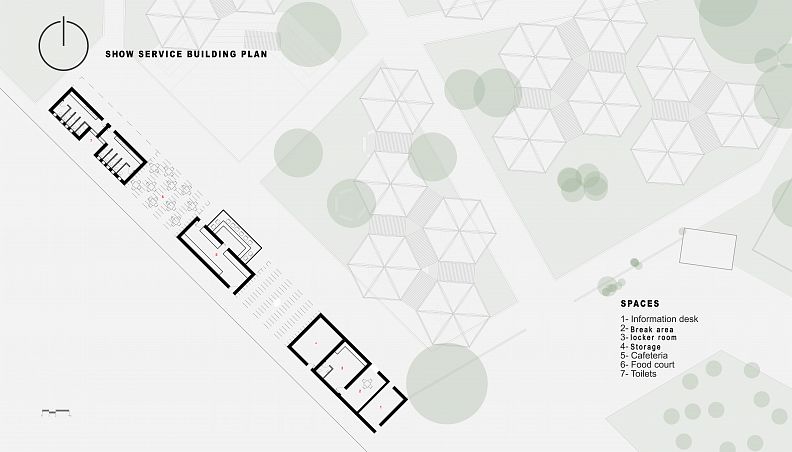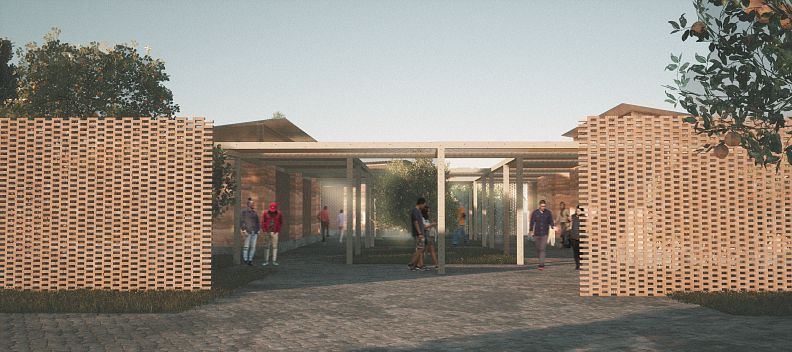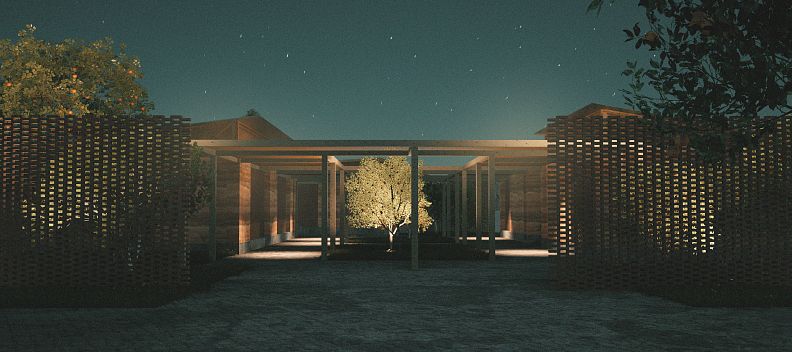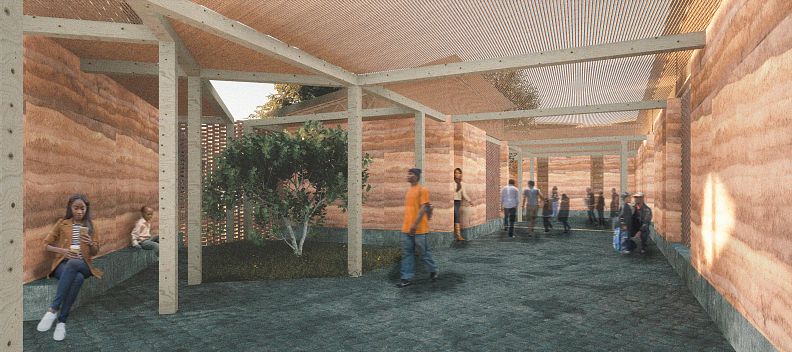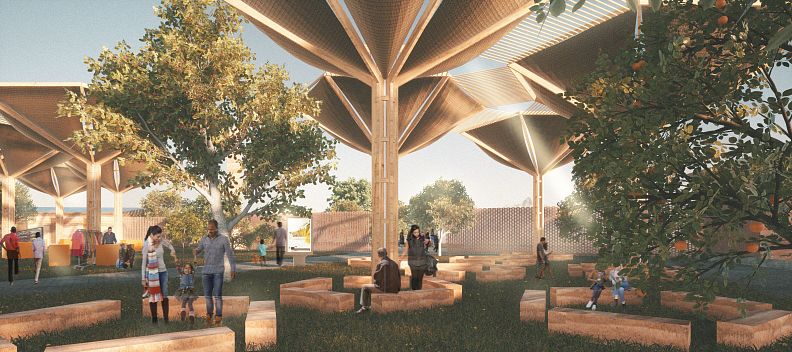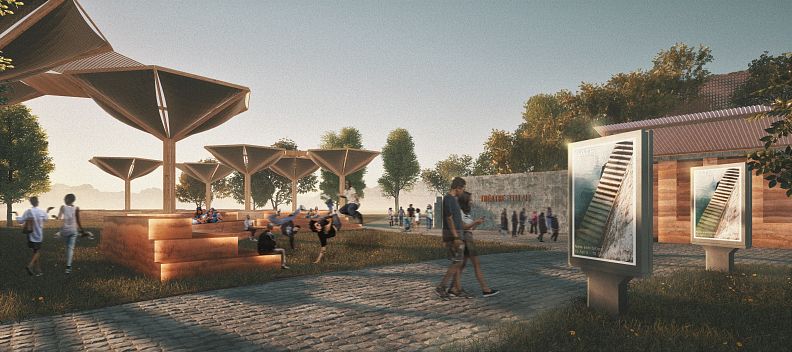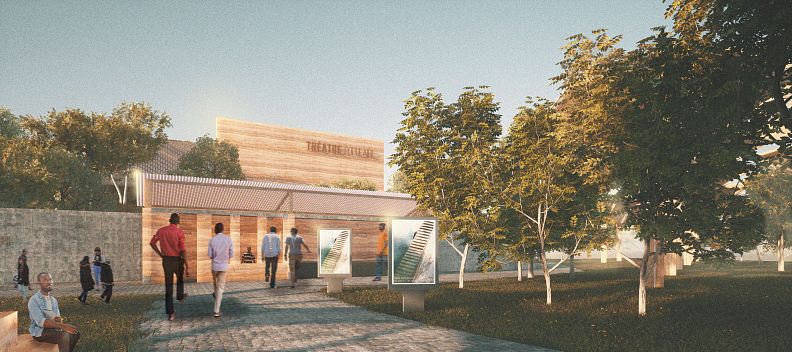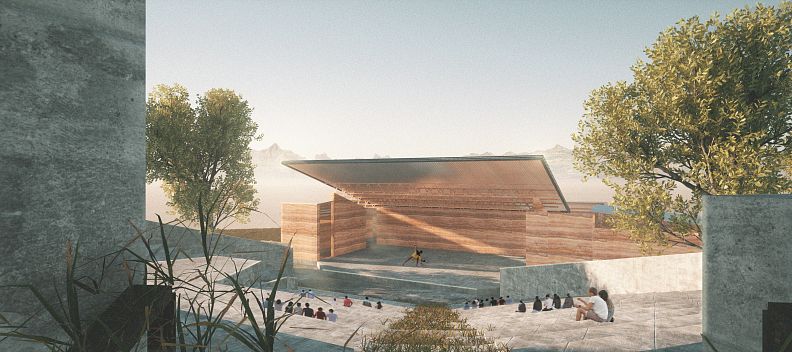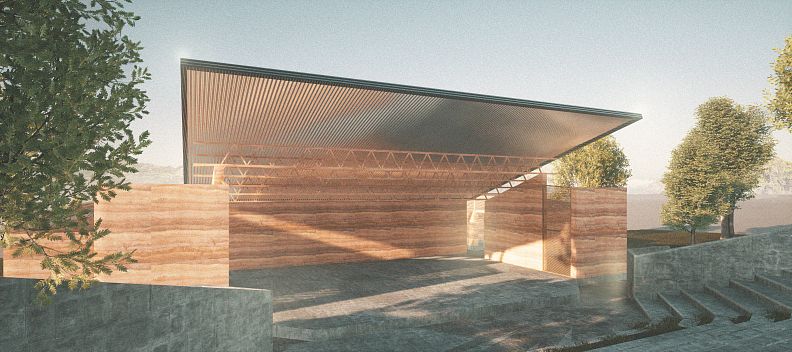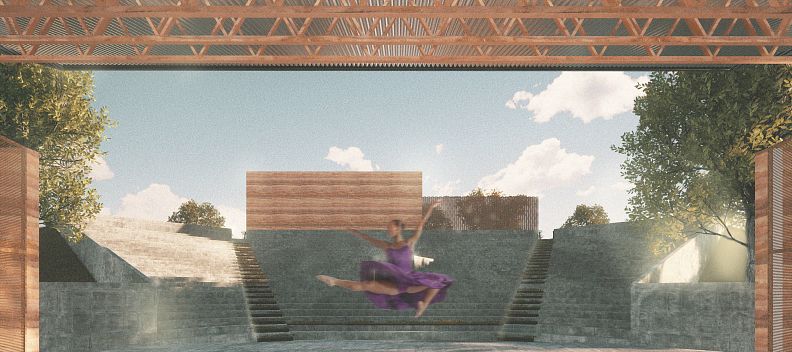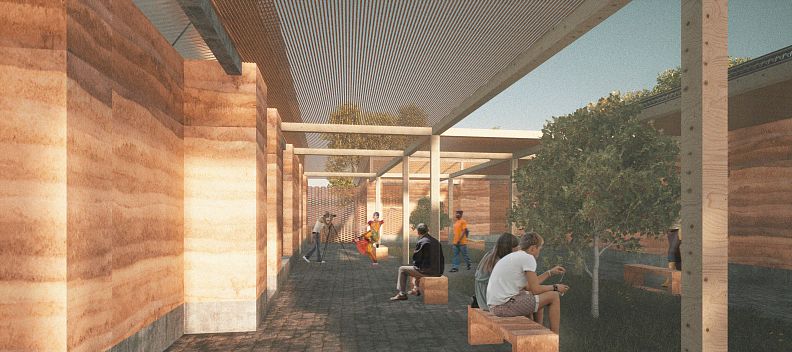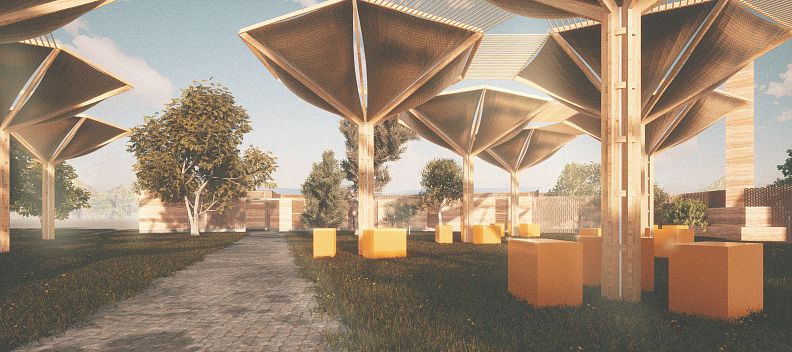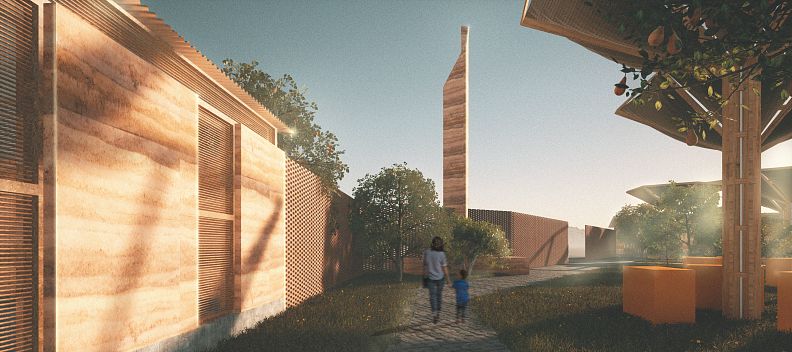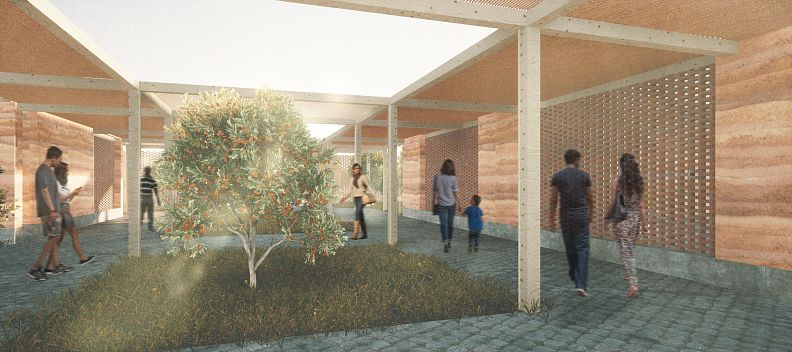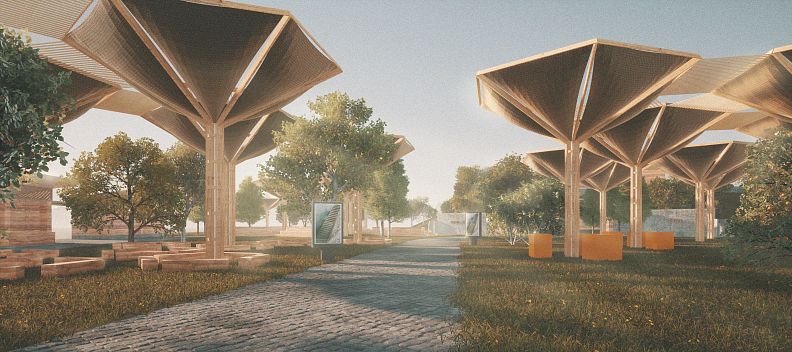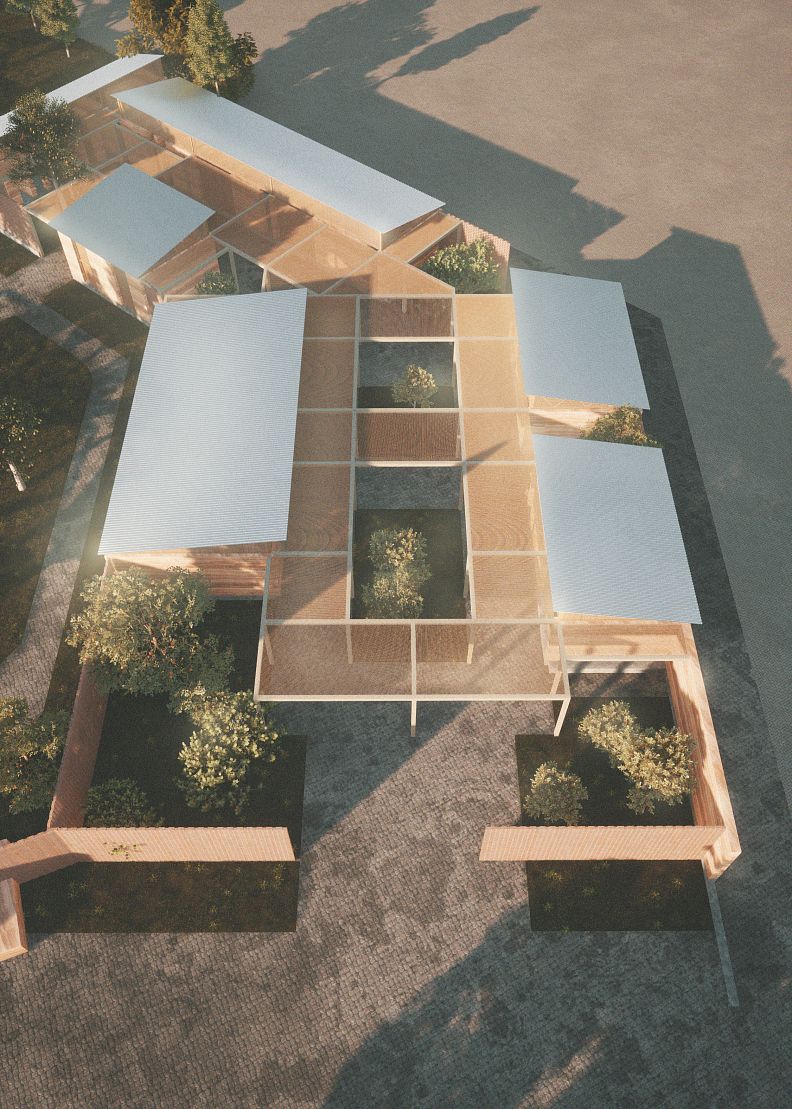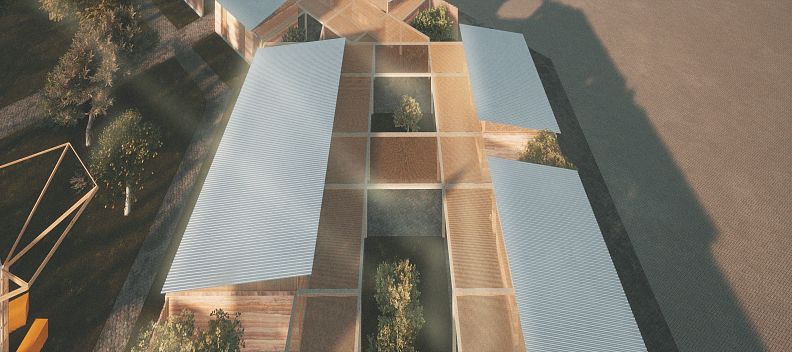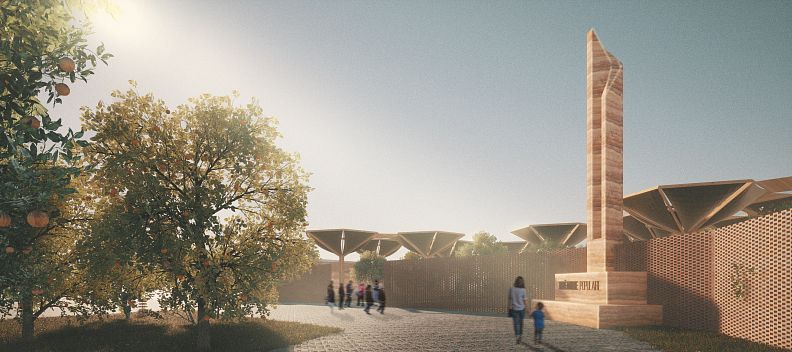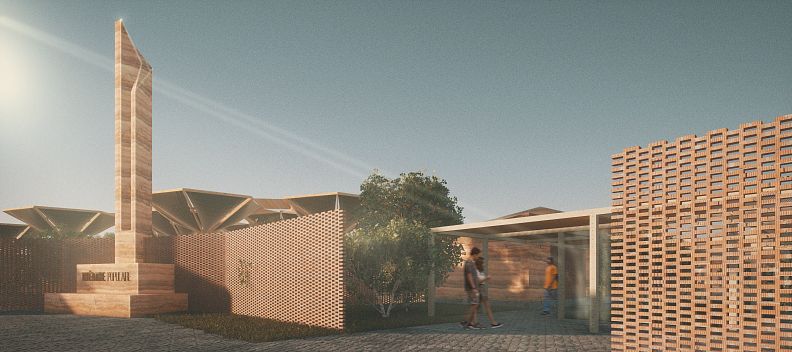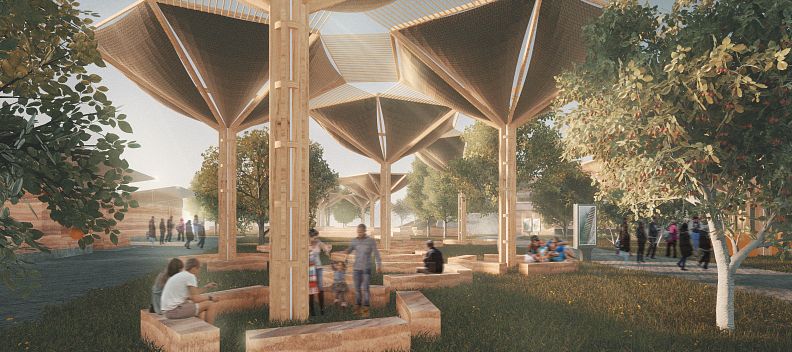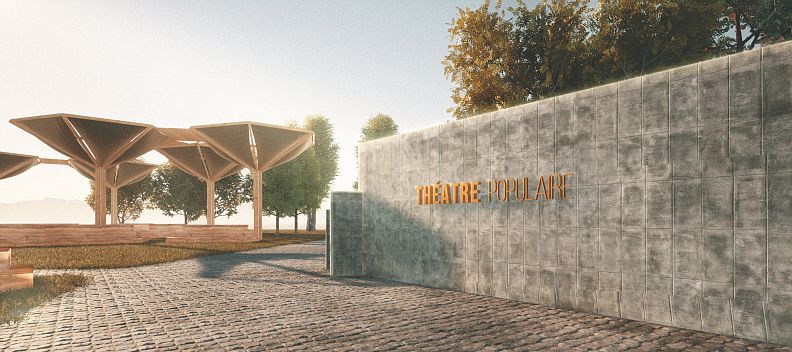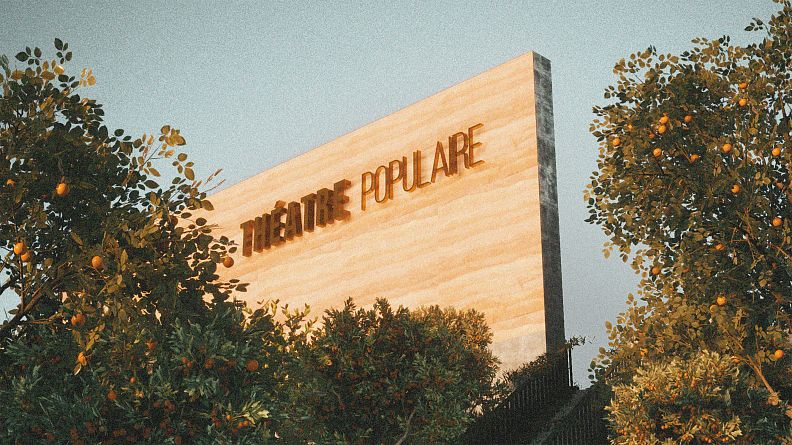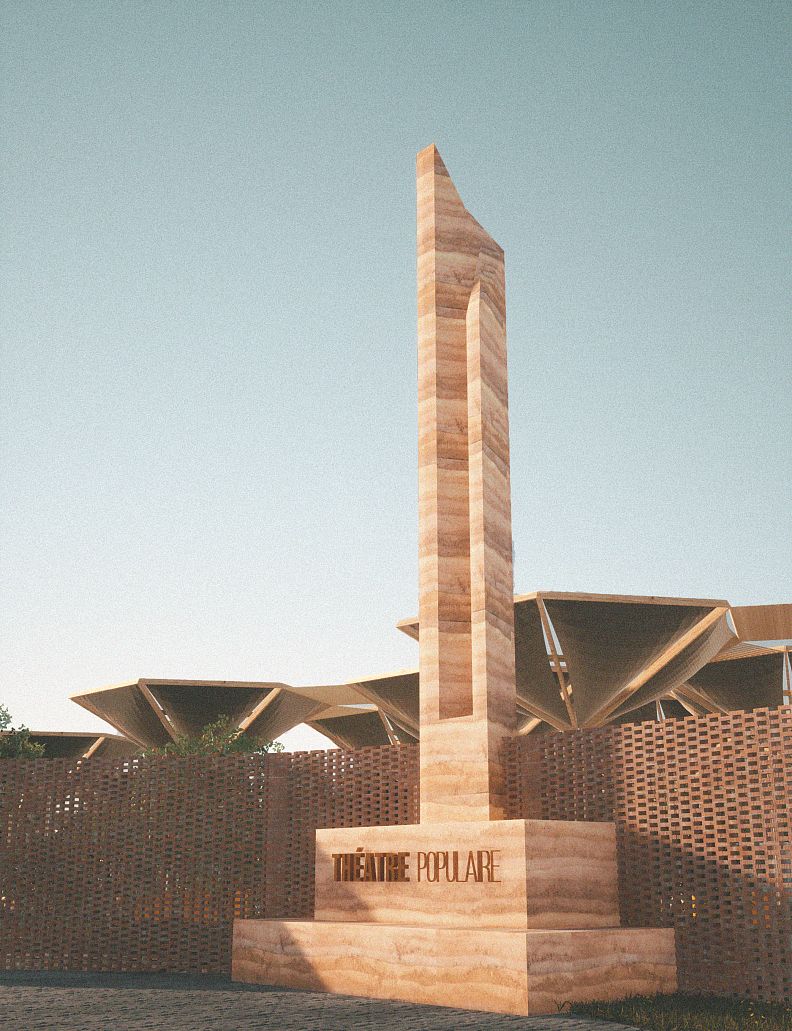The Amphitheatre of the future

Project idea
Concept:
The aim of the proposal is to rehabilitate how modern architecture should look like, by showing the capabilities of simple techniques and local materials to reduce cost as well as to increase the environmental and construction efficiency.
The design aims to redefine the “theater” to make it a cultural hub that symbolizes Burkina Faso, that speaks to its nature and resources. It's a place that displays diverse arts as a way of expression of the people’s beliefs and feelings.
It’s the centre and pioneer of sustainable architecture. It’s a place that gives back to the community through learning, inspiration and resources. It's a place for social connections where everyone is included, where there is freedom of expression through all forms of art.
Project description
Form:
The form chosen for this project was based on clusters which are taken from Burkina Faso’s heritage and old building traditions. The form keeps the design in harmony with the environmental sustainability that we want this place to represent. The space is divided into three main zones based on its functions, each of which forms a cluster. The clusters protect the buildings and its occupants from the Harmattan winds in the dry season.The courtyards formed by these clusters allow the exit of hot air facilitating its circulation to prevent overheating, and trees are used in these courtyards to filter air. In the project as a whole we avoided cutting out any trees and used the trees for shading, and air filtration.
Open space:
As for the open space it is divided into five functions.The first space is for secondary performances that can be used for different speakers, writers, singers, or people who want to share a message and maybe hold motivational speeches. This open space is equipt to hold a diversity of such events.
In the second space we focused on dividing the space in a way that would inspire people to gather, to get inspired and to freely perform and improvise. This is achieved through directing the seating organization to certain points of focus, which we believe will inspire people to perform and facilitate seating for the audience.
The third space is the art gallery space which we focused on being outdoors and among the trees to keep in contact with nature.
The fourth space is a shaded market space that displays the community’s works and to help those who have talents to earn a living.
The final space lies next to the labo space, therefore it was turned into a space that services this area and works also for public use, it's a space for students and people who work there to hangout outside of the courtyard.
In the back of the theater we chose to plant a part and turn the rest of it into a stepped seating that views the rest of the premise. Knowing the nature of Burkina Faso’s land, it is flat and doesn't have many contours so this stepped area can offer a view that isn't normally seen in this land type.
The land was huge so we chose to make use of every inch to serve a purpose that supports the message this place wants to send to the community; you are welcome, you are free to express in any way shape or form, you are supported and you are safe.
Technical information
Materials and Structural system:
The structural system used was intended to be simple for feasibility and time efficient purposes. Therefore, a basic wall bearing structure is used using rammed earth, and a basic truss for all the roofs, using metal.
There are four main materials used in this project. Each material enhances the environmental sustainability of the building, betters it aesthetically and is local. The materials are all natural and durable in the harsh weather conditions that are experienced in Burkina Faso.
The first material which is Rammed earth, was chosen for its water resistance in the rainy season and for its aesthetically pleasing look which consists of the layers dirt that is compressed together to create this beautiful pattern. The choice for this was both environmentally conscious and symbolic. The compacted layers represent the diversity of this country with its various ethnic groups. It shows the different layers that created this one beautiful whole.
The second material is wood which is a very prominent local material. It was used in ceilings under the roof, and it is mixed with rammed earth in the elevations. The wood allows for ventilation and natural lighting making the building more energy efficient.
The third material is recycled plastic for roofs, from TECO2 based in Ouagadougou; “https://tecocarre.com/toitures-teco/”. This material valorises on local potentials and is very sustainable with its high insulation properties and its substantial decrease in carbon emissions that reaches 9KG. This material also solves the problem of plastic waste in ouagadougou which is a main environmental crisis around the world.
The fourth material used is the mud bricks, which is a local material. This material is used alternatingly in walls with rammed earth to allow ventilation and natural lighting.
To reassure our intention to be sustainable, we intend to recycle and reuse the materials left from the buildings removed in the land. The materials include the metal used in the trusses.
Water Management:
Given that Burkina Faso faces a drought season; the rain water collection, water storage and recycling of water was a major part of our design. One of the core principles in our design is its environmental sustainability and the fact that our design needs to give back to the community when the community is in need.
For storing the rain water we created a shading system based on water collection, the columns holding the shading system are hollow tubes passing the water to a water tank underground that is used for all water needs on the premise. As for the rest of the land we made sure to slope all roofs and adjust the slopes of the land to lead the water into vents that lead to several water tanks that lie underground.
Another system is in place for the recycling of water; tap waste water is separated from sewage waste water, and is filtered for reuse. In this part we wanted to inspire the community to use natural material to recycle their water and to filter rainwater for usage. After some research we chose to combine several natural filters to create one big filter. The water first passes by a basic clay and sawdust shaped pot. The sawdust; which is a combustible material, creates a porous structure that allows water to be filtered through it. This model is used to remove dirt and kill disease causing microbes. The water then moves into a stage of evaporative filtration, the water is put in a glass tank to create a greenhouse effect and store the heat allowing the hot sun in ouagadougou to disinfect and evaporate the water onto the third stage of filtration. The third and final stage of filtration is chlorification of water.
Co-authors
Authours:
-Abdelrahman Mohamed Abdelrahman Mohamed Badawi
-Jannah Gamal El-mehelmy
- Youssef Mohamed Mahmoud Osman


